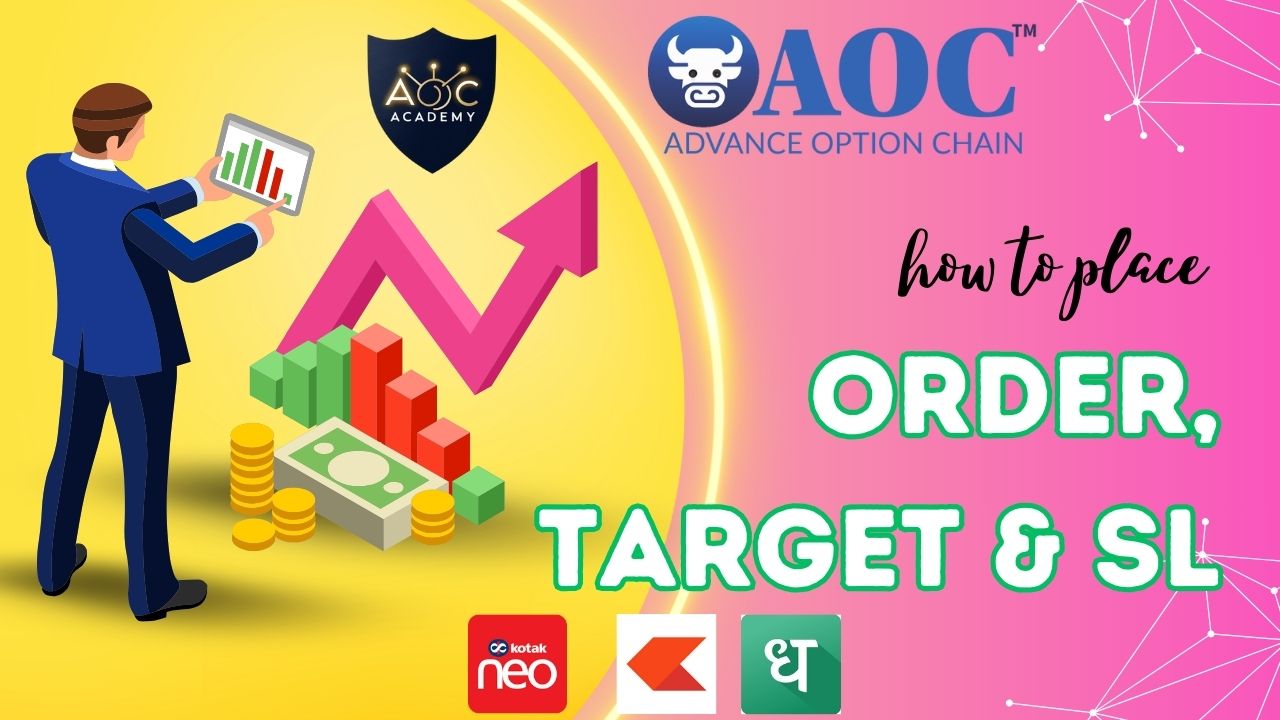Navigating the world of trading requires a solid understanding of order management. This post summarizes a detailed video tutorial covering order placement, stop-loss settings, and other crucial features across three popular brokerage platforms: Zerodha, Dhan, and Kotak Neo. Whether you’re a seasoned trader or just starting, this guide will provide valuable insights into optimizing your trading strategies.
Kotak Neo: A Seamless Start
The video begins with Kotak Neo, demonstrating the ease of web login using a QR code scanner on your mobile device. Simply navigate to the “Web Login” option within the Kotak Neo mobile app and scan the QR code displayed on the website. This quick and efficient method gets you trading in no time.
Exploring Kotak Neo’s Order Features
Kotak Neo’s order interface is well-organized, featuring tabs for “Open Orders,” “Closed Orders,” “GTT (Good Till Triggered),” and “Basket Orders.” Understanding these tabs is essential: “Open Orders” display pending trades, “Closed Orders” show completed or canceled trades, “GTT” allows you to pre-set orders that execute automatically when your specified conditions are met, and “Basket Orders” enable the simultaneous placement of multiple orders, a powerful tool for strategies like hedging. While each order in a basket incurs a separate brokerage charge, the ability to manage complex positions efficiently makes it a worthwhile feature.
Trading Options on Kotak Neo
Trading options on Kotak Neo is straightforward. Navigate to the F&O section to access the option chain for various instruments, such as Nifty. The option chain interface provides a clear view of available strike prices, allowing you to select the ones you wish to buy or sell. The tutorial demonstrates a demo buy order, explaining different order types like “Limit,” “Market,” and “SL (Stop Loss) Limit,” as well as order durations such as “Overnight” and “Intraday.”
The Power of Bracket Orders
A particularly useful feature highlighted in the video is the “Bracket Order,” available for intraday trading. This order type allows you to set both a stop-loss and a target price simultaneously, helping you manage risk and potential profit. The presenter walks through setting up a bracket order, including defining the stop-loss spread, target, and even a trailing stop-loss. It’s important to remember that stop-loss and target settings within bracket orders are managed by the broker and are not sent to the exchange until they are triggered.
Kotak Neo Mobile: Trading on the Go
The tutorial then transitions to the Kotak Neo mobile app, showcasing how to perform the same actions as on the web platform. The presenter accesses the orders section to view pending orders and attempts to modify a bracket order. It’s noted that while an order is pending, modifications to the bracket order’s conditions are not possible. The presenter then cancels the order and places a new one via the mobile app, demonstrating the process of setting a stop-loss and target.
Dhan: Multiple Interfaces, Streamlined Trading
Next, the video explores Dhan, highlighting its multiple interface options: Dhan, Dhan Option Trader, TradingView, and Sniques. The presenter chooses the TradingView interface for its user-friendly design. The login process involves scanning a QR code, similar to Kotak Neo. The presenter then sets up a layout with multiple charts to simultaneously monitor Nifty, call options, and put options.
Executing Trades on Dhan
Within Dhan, the presenter executes a put option trade, explaining various order types, including “Market,” “Limit,” “Trigger,” “Cover,” and “Bracket.” A bracket order is placed with a target and stop-loss, but an error occurs due to automatic price adjustments. The presenter clarifies that the sell stop limit order will be sent to the exchange only when the market price drops to the specified level.
Managing Positions on Dhan Mobile
The Dhan mobile app is used to manage an open position, demonstrating how to exit or edit an order. The presenter points out the pending triggers for target and stop-loss, which are managed by the broker. When creating a new position, the presenter shows how to search for an option, select it, and use the bracket order feature to set both a stop-loss and a target.
Zerodha: A Comprehensive Platform
The video then shifts its focus to Zerodha. After logging in, the presenter navigates to the option chain to initiate a trade. The presenter explains the available order types, including “Quick” (market order) and “Regular” (intraday and overnight). Zerodha utilizes GTT (Good Till Triggered) for setting stop-loss and target prices, which require manual cancellation if the position is exited manually.
Zerodha Mobile: Trading at Your Fingertips
The Zerodha mobile app is used to demonstrate order placement. The presenter navigates to the options chain and sets up a buy order. The tutorial explains how to switch between quantity and lot sizes, as well as how to select between market and limit orders. The presenter attempts to set a stop-loss and target, highlighting that Zerodha uses percentages instead of absolute numbers for these parameters.
Setting Stop-Loss on Zerodha
The final part of the Zerodha demonstration focuses on setting a stop-loss for an existing order. The presenter navigates to the exit option, selects the SL order type, and sets the trigger and limit prices to manage risk. The stop-loss order will be placed when the market price falls below the trigger price.
This comprehensive guide provides a comparative overview of order management across three popular brokerage platforms. By understanding the nuances of each platform, traders can make informed decisions and optimize their trading strategies. Remember to practice and familiarize yourself with each platform’s features before committing real capital.


